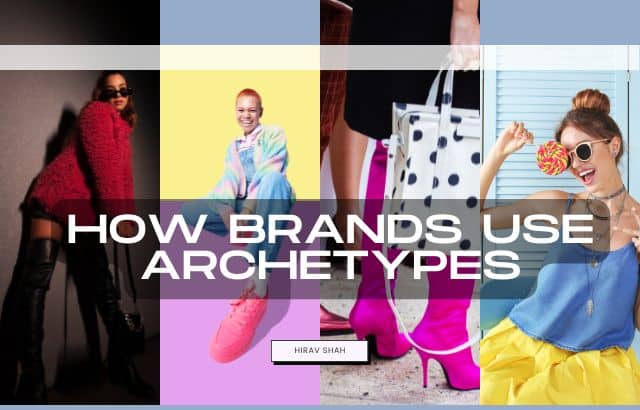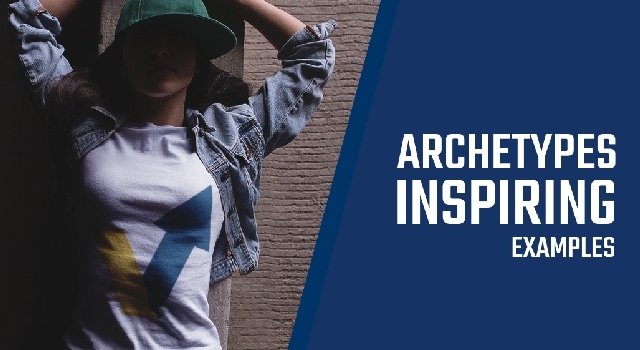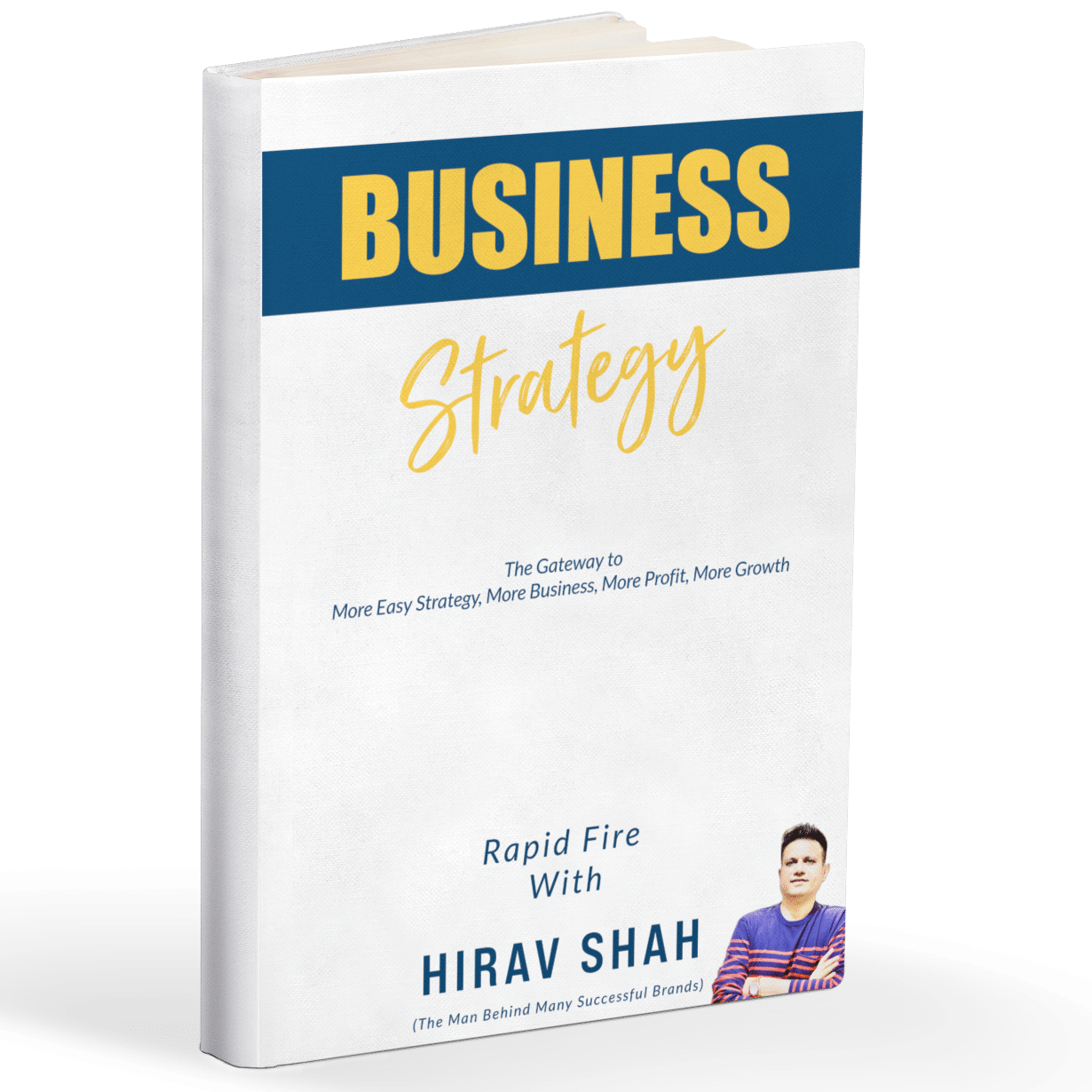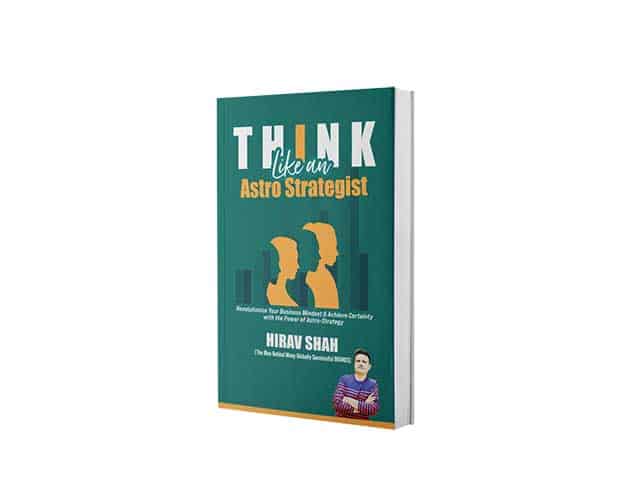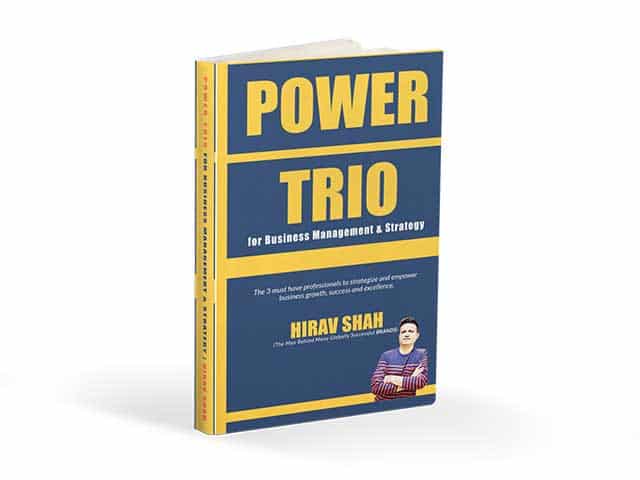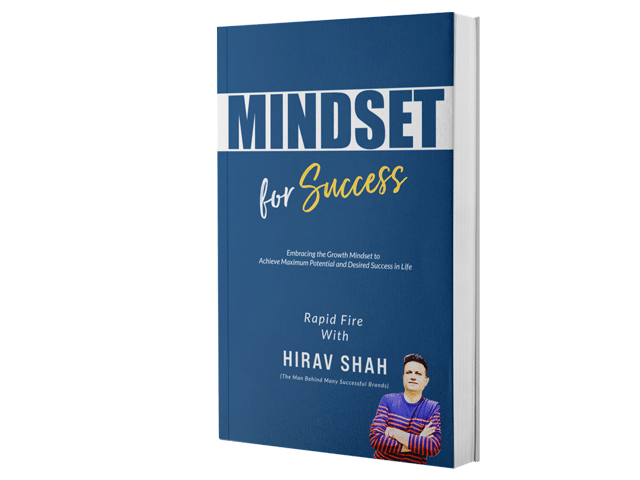Have you ever noticed how some brands seem to have their own unique personality? It’s not just about the products they offer – it’s how they communicate, their tone, and the emotional connection they create with their customers. One of the key reasons behind this is the use of brand archetypes.
Archetypes are universal symbols or themes that resonate deeply with human emotions. They are deeply rooted in the collective unconscious and often appear in literature, art, and mythology. When brands align themselves with specific archetypes, they can tap into these emotions, creating a stronger and more meaningful bond with their audience.
By identifying the right archetype, companies can tailor their messaging, advertising, and product development in a way that speaks directly to their customers’ desires, needs, and values. This approach can lead to increased brand recognition, loyalty, and market differentiation.
In this post, we’ll dive into 12 archetypes and explore how 12 Indian brands and 10 global brands have leveraged these archetypes to build lasting connections with their customers.
Table of Contents
Brand Archetypes and Their Role in Shaping Identity
1. The Innocent
Simple, pure, and optimistic, brands that embody this archetype often evoke feelings of nostalgia and happiness.
Example: Amul Butter – With its wholesome and cheerful marketing, Amul taps into the innocent archetype by promoting purity and goodness.
2. The Explorer
Brands that value freedom, adventure, and self-discovery. They encourage customers to break free from the ordinary.
Example: Royal Enfield – Known for its rugged motorcycles and adventurous spirit, Royal Enfield perfectly embodies the explorer archetype.
3. The Sage
Knowledgeable, wise, and analytical, these brands are seen as experts in their field, offering insights and solutions.
Example: Tata Consultancy Services (TCS) – A global leader in IT and business solutions, TCS positions itself as a sage, offering expertise and innovative solutions.
4. The Hero
Brave, determined, and action-oriented, hero brands inspire customers to be their best and conquer challenges.
Example: Mahindra & Mahindra – With its “Rise” philosophy, Mahindra embodies the hero archetype, motivating customers to achieve greatness and overcome obstacles.
5. The Outlaw
Rebellious, daring, and unconventional, outlaw brands break the rules and defy societal norms.
Example: Kingfisher Beer – Known for its bold and audacious advertising, Kingfisher embodies the outlaw archetype, appealing to customers who value freedom and rebellion.
6. The Magician
Transformative, visionary, and innovative, magician brands offer customers the chance to experience something magical or extraordinary.
Example: Tanishq Jewellery – With its rich, elegant designs and a focus on transformation, Tanishq represents the magician archetype by making customers feel special.
7. The Regular Guy/Girl
Relatable, down-to-earth, and approachable, these brands are designed for the everyday person and emphasize inclusivity and comfort.
Example: Fevicol Adhesive – Known for its reliable, no-frills messaging, Fevicol taps into the everyman archetype by offering practical solutions for everyday problems.
8. The Lover
Sensual, passionate, and emotional, lover brands focus on pleasure, beauty, and romance.
Example: Cadbury Dairy Milk – Cadbury’s rich and indulgent chocolates evoke feelings of love, joy, and care, making it a perfect fit for the lover archetype.
9. The Jester
Fun, playful, and humorous, jester brands bring joy and entertainment to customers’ lives.
Example: Vodafone Zoozoos – The Zoozoos, with their quirky personalities and humorous skits, align with the jester archetype, bringing light-hearted entertainment to their audience.
10. The Caregiver
Compassionate, nurturing, and supportive, caregiver brands are focused on the well-being of their customers.
Example: Lifebuoy Soap – Lifebuoy’s messaging of health and hygiene resonates with the caregiver archetype, emphasizing the protection of loved ones.
11. The Creator
Innovative, imaginative, and artistic, creator brands encourage self-expression and the creation of something new.
Example: Fabindia – Known for its artisan-crafted products, Fabindia represents the creator archetype, promoting creativity, cultural heritage, and individuality.
12. The Ruler
Powerful, authoritative, and prestigious, ruler brands convey a sense of control, success, and luxury.
Example: Taj Hotels – Taj’s luxury properties and exceptional services align with the ruler archetype, creating a sense of exclusivity and prestige for its customers
How Brands Use Archetypes to Build Emotional Connections

Here’s a revised version of your text, broken down with subheadings for better readability, and with some sentence restructuring to meet the guidelines:
1. Nike – The Hero Archetype
Nike’s iconic “Just Do It” campaign encourages customers to overcome obstacles and achieve greatness. As the embodiment of the hero archetype, Nike motivates people to push their limits and take on challenges, turning each purchase into a personal victory.
2. Coca-Cola – The Innocent Archetype
Coca-Cola taps into feelings of joy and nostalgia. Their “Holidays are Coming” campaign evokes a sense of happiness, purity, and simplicity, reflecting the innocent archetype. Coca-Cola is a symbol of carefree moments and the pursuit of happiness.
3. Apple – The Magician Archetype
Apple has long been associated with innovation. Their products don’t just serve a function—they transform the way we live. The magician archetype is all about turning the ordinary into the extraordinary, and Apple delivers on that promise through its groundbreaking technology.
4. Harley-Davidson – The Outlaw Archetype
Harley-Davidson has cultivated a rebellious image. Its messaging is centered around freedom, individuality, and defying conventions. As the outlaw archetype, the brand resonates with customers who want to break free from the norm and embrace their bold, fearless side.
5. Dove – The Caregiver Archetype
Dove’s “Real Beauty” campaign promotes self-love and care, encouraging women to embrace their natural beauty. This approach aligns with the caregiver archetype, as Dove seeks to foster self-esteem and confidence by celebrating real, unretouched beauty.
6. Red Bull – The Explorer Archetype
Red Bull’s tagline, “Gives You Wings,” embodies the explorer archetype. The brand encourages its customers to push their boundaries, take risks, and embrace new adventures. Red Bull is about living life boldly and experiencing the world through an adventurous lens.
7. Airbnb – The Everyman Archetype
Airbnb stands for community, inclusivity, and belonging. Its message centers on authentic travel experiences that connect people with each other. The brand’s focus on down-to-earth, everyday experiences makes it the perfect example of the everyman archetype.
8. BMW – The Ruler Archetype
BMW symbolizes power, prestige, and success. Its association with luxury, precision, and exclusivity aligns with the ruler archetype. The brand stands for achievement and status, appealing to customers who seek a symbol of success in their personal and professional lives.
9. Old Spice – The Lover Archetype
Old Spice’s playful and seductive advertising, including the memorable “The Man Your Man Could Smell Like” campaign, appeals to the lover archetype. The brand evokes attraction, desire, and confidence, offering a touch of charm and sensuality to its customers.
10. FedEx – The Sage Archetype
FedEx is known for its reliability and expertise in logistics. It aligns with the sage archetype, offering knowledge, security, and trust. With a reputation for dependability, FedEx reassures customers that their packages will always arrive on time and in safe hands
The Role of Business Strategists in Implementing Archetypes
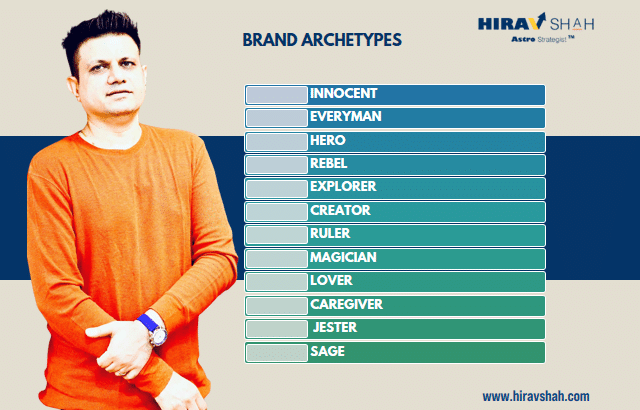
A business strategist plays a pivotal role in identifying and implementing the right brand archetype. By analyzing consumer behavior, market trends, and the competitive landscape, strategists help brands carve out a distinctive identity that resonates with their target audience.
Hirav Shah, a renowned business strategist, is known for his ability to guide brands in selecting the right archetype to boost their market presence. As a “Game Changer” in the industry, Hirav emphasizes that a well-defined brand archetype can shape consumer perceptions, drive customer loyalty, and enhance overall business success.
For example, Hirav Shah might guide a client in selecting an archetype based on their brand’s mission, vision, and values. If the client is launching a product with a focus on adventure and self-discovery, the Explorer archetype would be a strategic fit. The next step would involve tailoring all marketing materials, from advertising to product design, to reflect this archetype’s values and tone.
Frequently Asked Questions
- What are brand archetypes?
>>>Brand archetypes are universal, recognizable patterns or symbols that companies use to shape their brand identity and connect with consumers on an emotional level. - How do I determine my brand’s archetype?
You can determine your brand’s archetype by evaluating its core values, mission, customer base, and overall personality. Consider what emotions you want to evoke in your customers and which archetype best reflects those qualities. - Why are archetypes important in branding?
Archetypes help brands create a strong emotional connection with their target audience. By aligning with a recognizable pattern, a brand can build loyalty, trust, and recognition in a crowded market. - Can a brand embody more than one archetype?
>>>Yes, some brands may blend characteristics of multiple archetypes, but it’s essential to maintain a primary archetype to ensure clarity and consistency in your messaging. - How do I use archetypes in my marketing strategy?
>>>Once you identify your brand’s archetype, integrate it into all aspects of your marketing strategy – from tone of voice to visual identity to customer experience. This consistency will help reinforce your brand’s message.
Conclusion
Brand archetypes are a powerful tool for building a strong, recognizable identity and fostering emotional connections with your audience. By aligning your brand with a specific archetype, you can shape your messaging, create consistent experiences, and resonate with your customers’ values and emotions. Whether you’re a hero brand like Nike or a caregiver like Dove, choosing the right archetype can help you stand out in a crowded market and cultivate lasting loyalty. With the guidance of business strategists like Hirav Shah, brands can tap into the power of archetypes to differentiate themselves and drive business success.

